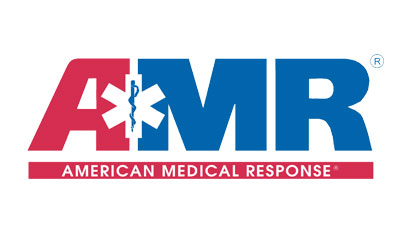Connecticut AMR EMT Demonstrates Ideal EMS Response.
Partner: American Medical Response
Geography: Farmington, Connecticut
Background: Encouraged by witnessed SCA survival rates that can reach as high as 49 percent in some communities, EMS systems are tapping into improved training and technology to improve survival from out-of-hospital cardiac arrest (OHCA).
The Story: It was a warm, foggy morning when American Medical Response EMTs Lindsay and Krystyna got the call: a person had fallen from a treadmill and lay unconscious. They were immediately dispatched to the nearby gym, arriving 1 minute and 47 seconds after the call was received in the 911 center. They found bystander CPR in progress. Moments later, fire crews arrived and took over CPR.
The 47-year-old patient was found to be in full cardiac arrest. An AED was applied, bagged ventilations given via oral airway, shock delivered, and CPR continued.
The patient regained pulses shortly after-total time elapsed of 10 minutes. He was transported to the University Medical Center, was evaluated in the cath lab and discharged several days later with normal neurologic function.
The survivor posted on the AMR Facebook page, thanking all the rescuers for their actions. He will be going back to work, a believer and a testimony to the effectiveness of a well-oiled chain of survival.
Learnings: This story underscores the process of care working as it should. Technology has allowed precise measurement of time elapsing between attempted resuscitations, and as a result, it has fostered enhanced attentiveness to the importance of continuous high-quality chest compressions in addition to early defibrillation and any appropriate drug therapy.
Of course, without prompt action by the bystander, the patient’s chances of survival would have been diminished significantly. The responding agency in Connecticut is now working to increase the number of AEDs in local businesses and offering training in bystander CPR in preparation for the next lives to be saved.


